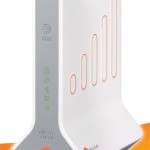I’ve been using HE.net‘s TunnelBroker service to ensure the various sites/services I host  are available via IPv6.  When we moved up to San Francisco, I decided to finally setup our home network with its own tunnel as well.  (SCALE’s services hosted over at ActUSA have long IPv6 enabled since 2009~).   Currently we tunnel traffic using our trusty old Linksys WRT54G running OpenWRT through HE.net, routes are advertised to the local network using RADVD.
So far things have worked surprisingly well, with a few exceptions for older devices.  Here is a quick review of what we have working, and what is still in progress.
Devices supporting IPv6:
- Linksys WRT54G
w/ OpenWRT
Required some futzing with modules and configuration but work if you follow instructions. Â I’m a bit surprised ipv6 kernel modules are not load out of the box on current builds. - Nexus One
(Android 2.3.x)
Works out of the box on wifi, pickups route advertisement and passes on test-ipv6.com. - Maru’s iPhone 3GS
Had to upgrade to latest iOS release (4.2.3) as it was running ancient jail-broken 3.1 build.  It looks like you need to be running at least iOS 4.x for  IPv6 support.  The anyone part is I cannot seem to find is a GUI that allows you to display the IPv6 address.  The usual dialogs only display an IPv4 address.  Accessing a test site though, I’m able to see what the address is and confirm traffic routes as expected. - Operating Systems
Centos 5.5, Ubuntu 10.10, Ubuntu 11.04, and OSX all seemed to work out of the box. No configuration was required, Â as soon as I turned the systems on they had an IPv6 address. - Brother HL-3040CN Color Laser Printer
Network color laser printer. Â No issues with IPv6 so far. Â It is not enabled by default, you need to login via the web interface and check a box.
Devices not yet working with IPv6:
- Panasonic DMP-BD65 Blu-Ray Player –
Do any Blu-ay devices support IPv6 yet? Â (Â Update: Panasonic has indicated none of their current Blu-Ray players support ipv6.) - Linksys WIP 300 SIP phone.
I believe it runs a uCLinux for its operating system, but  Linksys stopped providing OS / firmware updates long ago. - Nintendo Wii
No dice so far. I Â did send an email inquiry to technical support who implied it was possible and asked me to call in for details. Â Phone support seemed unable help unless I could provide an error code, which I cannot since one is not displayed. Â Â There are a number of misinformed forum posts claiming the Wii will use IPv6 out of the box, but this does not appear to be true. Â Further research indicates its DNS resolver will attempt to lookup AAAA records before querying for A records, but the Wii itself will not pickup a v6 address. Â If someone knows of a way to make this work drop me a line.
Helpful IPv6 Resources:
- TunnelBroker.net – Â Hurricane Electric provides free IPv6 tunneling in case your own ISP does not do so natively just yet (very consumer ISPs in the United States do at the moment).
- Test-IPv6.com – A series of tests to confirm IPv6 and IPv4 are working properly for your host. Â Other similar sites are: Â WhatIsMyIPv6.com, ActUSA’s IPv6 Test Page, and ip6.nl.
- IPv6Â Certification – A series of tasks and tests to help you learn the ropes with regards to IPv6.
- SiXXS – Configuring Your OS

